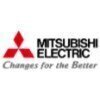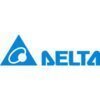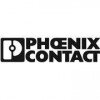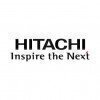Filter interviews by
Zet Town Interview Questions and Answers
29 Interview questions
FAI stands for First Article Inspection, a quality control process to verify that a product meets specifications before mass production.
FAI is conducted on the first production run of a new part or product.
It ensures that the manufacturing process is capable of producing parts that meet design specifications.
FAI documentation includes measurements, material certifications, and process validations.
For example, in a...
Quality planning involves defining quality standards and procedures to ensure products meet customer expectations and regulatory requirements.
Identify quality objectives: Establish clear goals for quality, such as reducing defects by 20%.
Define quality standards: Set specific criteria for products, like ISO 9001 compliance.
Develop quality assurance processes: Create procedures for testing and inspection, such as u...
BOM verification ensures accuracy in product structure, components, and compliance with specifications.
Cross-check BOM against design documents to ensure all components are listed.
Verify quantities of each component match production requirements.
Ensure part numbers are accurate and correspond to the correct suppliers.
Check for compliance with regulatory standards, especially in medical devices.
Conduct audits of BO...
Ohm's law states that the current flowing through a conductor is directly proportional to the voltage across it, and inversely proportional to the resistance of the conductor.
Ohm's law is represented by the formula V = IR, where V is voltage, I is current, and R is resistance.
It helps in calculating the current flowing through a circuit when the voltage and resistance are known.
It also helps in determining the res...
Aoi operators manage pre-increment and post-increment operations in programming, affecting variable values and expressions.
Pre-increment (e.g., ++i) increases the value before it's used in an expression.
Post-increment (e.g., i++) increases the value after it's used in an expression.
Example: If i = 5, then ++i results in 6, while i++ results in 5 before incrementing to 6.
Pre-increment is often used in loops for imm...
The Aoi operator refers to the precedence of operations in programming, particularly in incrementing values.
The pre-increment operator (++variable) increases the value before it is used in an expression.
The post-increment operator (variable++) increases the value after it is used in an expression.
Example of pre-increment: int a = 5; int b = ++a; // a is now 6, b is 6.
Example of post-increment: int a = 5; int b = a...
The Aoi operator refers to the use of pre-increment and post-increment operators in programming, affecting variable values.
Pre-increment (e.g., ++i) increases the value before it's used in an expression.
Post-increment (e.g., i++) increases the value after it's used in an expression.
Example: If i = 5, then ++i results in 6, while i++ results in 5 during the expression evaluation.
Pre-increment is often used in loops...
Aoi operators manage precedence in expressions, with 'pri' for priority and 'post' for evaluation order after execution.
Aoi operators determine the order of operations in expressions.
The 'pri' operator indicates higher precedence, evaluated first.
The 'post' operator evaluates expressions after the main operation.
Example: In 'x = a + b * c', '*' has higher 'pri' than '+'.
Post operators can affect the final value af...
A control plan is a detailed document that outlines the methods and procedures for monitoring and controlling a process to ensure quality standards are met.
Control plans typically include information on process steps, key inputs, key outputs, monitoring methods, and corrective actions.
They are used in manufacturing and other industries to ensure consistency and quality in production.
Examples of control plan tools ...
8D is a problem-solving methodology used to identify, correct, and prevent recurring problems in a systematic way.
8D stands for 8 disciplines, each representing a step in the problem-solving process
It involves identifying the problem, forming a team, defining containment actions, root cause analysis, corrective actions, implementing permanent corrective actions, preventing recurrence, and recognizing the team's ef...
Zet Town Interview Experiences
34 interviews found
I appeared for an interview in Nov 2024.
(2 Questions)
- Q1. Aoi operator in tri
- Ans.
Operator ing in aoi pcb
- Q2. Pri aoi and post aoi is a operator
- Ans.
Operator ing in aoi pcb
(2 Questions)
- Q1. Aoi operator pri and p Post
- Ans.
Operator ing in aoi pcb
- Q2. Pri aoi and post aoi operator
(2 Questions)
- Q1. Aoi operator pri and post aoi
- Ans.
The Aoi operator refers to the use of pre-increment and post-increment operators in programming, affecting variable values.
Pre-increment (e.g., ++i) increases the value before it's used in an expression.
Post-increment (e.g., i++) increases the value after it's used in an expression.
Example: If i = 5, then ++i results in 6, while i++ results in 5 during the expression evaluation.
Pre-increment is often used in loops for ...
- Q2. Aoi operator pri and post aoi operator
- Ans.
The Aoi operator refers to the precedence of operations in programming, particularly in incrementing values.
The pre-increment operator (++variable) increases the value before it is used in an expression.
The post-increment operator (variable++) increases the value after it is used in an expression.
Example of pre-increment: int a = 5; int b = ++a; // a is now 6, b is 6.
Example of post-increment: int a = 5; int b = a++; /...
(2 Questions)
- Q1. Pri aoi and post aoi operator
- Q2. Pri aoi and post aoi operator
(2 Questions)
- Q1. Pri aoi and post aoi operator
- Q2. Pri aoi and post aoi operator
(2 Questions)
- Q1. Aoi operator pri and post aoi operator is handling
- Ans.
Aoi operators manage pre-increment and post-increment operations in programming, affecting variable values and expressions.
Pre-increment (e.g., ++i) increases the value before it's used in an expression.
Post-increment (e.g., i++) increases the value after it's used in an expression.
Example: If i = 5, then ++i results in 6, while i++ results in 5 before incrementing to 6.
Pre-increment is often used in loops for immediat...
- Q2. Aoi operator pri and post aoi operator handling
- Ans.
Aoi operators manage precedence in expressions, with 'pri' for priority and 'post' for evaluation order after execution.
Aoi operators determine the order of operations in expressions.
The 'pri' operator indicates higher precedence, evaluated first.
The 'post' operator evaluates expressions after the main operation.
Example: In 'x = a + b * c', '*' has higher 'pri' than '+'.
Post operators can affect the final value after t...
Aoi operator pri and post aoi operator
Aoi operator pri and post aoi operator
Aoi operator pri and post aoi operator
Aoi operator pri and post aoi operator
Aoi operator and post aoi operator pri
Aoi operator pri and post
Interview Preparation Tips
(2 Questions)
- Q1. Basic information your qualification
- Q2. Education related questions
I applied via Walk-in and was interviewed in Aug 2024. There was 1 interview round.
(5 Questions)
- Q1. Please tell me about yourself
- Ans.
I am a detail-oriented individual with a strong work ethic and a passion for ensuring quality production.
Experienced in operating production equipment
Skilled in quality control procedures
Strong attention to detail
Team player with excellent communication skills
- Q2. Where do you live?
- Ans.
I live in a cozy apartment in downtown Seattle.
I live in downtown Seattle
I reside in an apartment
My home is cozy and comfortable
- Q3. What is production?
- Ans.
Production is the process of creating goods or services through the use of resources such as labor, machinery, and materials.
Production involves transforming raw materials or components into finished products.
It includes activities such as manufacturing, assembling, packaging, and quality control.
Efficient production processes can lead to cost savings and increased output.
Examples of production include car manufacturin...
- Q4. If you give the opportunity to do work in zet town then what will do?
- Ans.
I would be excited to work in zet town and would approach the opportunity with enthusiasm and dedication.
I would research the town to learn about its culture, community, and amenities.
I would network with locals to gain insights and build relationships.
I would adapt to the new environment and embrace the challenges and opportunities it presents.
- Q5. What do you know about zet town company
- Ans.
Zet Town Company is a manufacturing company known for producing high-quality electronic components.
Zet Town Company specializes in manufacturing electronic components
They are known for their high-quality products
The company has a strong reputation in the industry
(2 Questions)
- Q1. Self introduction and experience
- Q2. Change your region jon
- Ans.
To change my region, I would need to update my address and contact information in the system.
Update address and contact information in the system
Notify relevant departments or authorities of the change
Ensure all necessary documentation reflects the new region
(2 Questions)
- Q1. Practically experience
- Q2. Trailer
Interview Preparation Tips
Job responsibility
(3 Questions)
- Q1. What's this 8D
- Ans.
8D is a problem-solving methodology used to identify, correct, and prevent recurring problems in a systematic way.
8D stands for 8 disciplines, each representing a step in the problem-solving process
It involves identifying the problem, forming a team, defining containment actions, root cause analysis, corrective actions, implementing permanent corrective actions, preventing recurrence, and recognizing the team's efforts
...
- Q2. What this control plan
- Ans.
A control plan is a detailed document that outlines the methods and procedures for monitoring and controlling a process to ensure quality standards are met.
Control plans typically include information on process steps, key inputs, key outputs, monitoring methods, and corrective actions.
They are used in manufacturing and other industries to ensure consistency and quality in production.
Examples of control plan tools inclu...
- Q3. What this 7 QC tool
- Ans.
The 7 QC tools are a set of basic statistical tools used for quality control and process improvement.
Check sheet: Used to collect and organize data in a structured format.
Histogram: Represents data distribution visually to identify patterns and trends.
Pareto chart: Helps prioritize issues by showing the most significant factors affecting quality.
Cause and effect diagram (Fishbone diagram): Identifies root causes of pro...
(2 Questions)
- Q1. Job change Reason
- Ans.
Seeking new challenges and opportunities for growth
Desire to expand skill set and knowledge in a new environment
Looking for a more challenging role that aligns with career goals
Seeking better work-life balance or improved job satisfaction
Opportunity for career advancement or higher salary
Company restructuring or downsizing leading to job change
- Q2. Salary Discretion
I applied via Referral
(2 Questions)
- Q1. Knowledge the mes manpower handling
- Q2. Knowledge the mes and manpower handling and dealy Enventry sheet maintain
I applied via Naukri.com and was interviewed in Apr 2024. There were 2 interview rounds.
(2 Questions)
- Q1. My resume are involved
- Q2. My resume are involved
(3 Questions)
- Q1. My resume are involved
- Q2. Face to face interview for my resume
- Q3. My technical skills
Interview Preparation Tips
- Core Java
I appeared for an interview in Nov 2024, where I was asked the following questions.
- Q1. What is quality planning ?
- Ans.
Quality planning involves defining quality standards and procedures to ensure products meet customer expectations and regulatory requirements.
Identify quality objectives: Establish clear goals for quality, such as reducing defects by 20%.
Define quality standards: Set specific criteria for products, like ISO 9001 compliance.
Develop quality assurance processes: Create procedures for testing and inspection, such as using ...
- Q2. How to BOM verify ?
- Ans.
BOM verification ensures accuracy in product structure, components, and compliance with specifications.
Cross-check BOM against design documents to ensure all components are listed.
Verify quantities of each component match production requirements.
Ensure part numbers are accurate and correspond to the correct suppliers.
Check for compliance with regulatory standards, especially in medical devices.
Conduct audits of BOM aga...
- Q3. What is FAI
- Ans.
FAI stands for First Article Inspection, a quality control process to verify that a product meets specifications before mass production.
FAI is conducted on the first production run of a new part or product.
It ensures that the manufacturing process is capable of producing parts that meet design specifications.
FAI documentation includes measurements, material certifications, and process validations.
For example, in aerosp...
I applied via Walk-in and was interviewed in Dec 2023. There was 1 interview round.
(5 Questions)
- Q1. Smt maintenance engineering
- Q2. Smt maintenance engineering123
- Q3. Smt maintenance engineering questions
- Q4. Maintenance engineering smt testing
- Q5. Smt maintenance engineering testing
Interview Preparation Tips
I appeared for an interview in Mar 2024.
(5 Questions)
- Q1. What is do ESD
- Ans.
ESD stands for Electrostatic Discharge.
ESD is the sudden flow of electricity between two electrically charged objects caused by contact, an electrical short, or dielectric breakdown.
It can damage electronic components and integrated circuits.
Preventive measures include using ESD-safe workstations, wearing ESD wrist straps, and using ESD mats.
Examples of ESD-sensitive devices include microchips, transistors, and circuit...
- Q2. What is do 5 s
- Ans.
5 s is a short form for 5 seconds.
5 s = 5 seconds
Commonly used in abbreviating time intervals
Example: 'Wait for 5 s before pressing the button'
- Q3. What is 3 R
- Ans.
3 R stands for Reduce, Reuse, Recycle - a mantra for sustainable living and environmental conservation.
Reduce: Minimize waste by using less resources.
Reuse: Find new ways to use items instead of throwing them away.
Recycle: Convert waste into reusable material to reduce the need for new resources.
- Q4. What is do kazin
- Ans.
Do kazin is a term used in Bluetooth development to refer to a specific protocol or feature.
Do kazin may refer to a specific function or method in Bluetooth development.
It could be a protocol used for data transmission between devices.
Do kazin might be a feature related to security or encryption in Bluetooth communication.
- Q5. What is quality
- Ans.
Quality is the measure of excellence or superiority of something.
Quality is subjective and can vary depending on individual preferences and standards.
It can be measured through factors such as durability, reliability, performance, and customer satisfaction.
Examples of quality products include high-end electronics, luxury cars, and premium clothing brands.
Interview Preparation Tips
- 7Qc
- 5 s
- 3R
- Kazin
- Pock
- QC inspector
- All process
- Mi line
Top trending discussions






Zet Town Interview FAQs
The duration of Zet Town interview process can vary, but typically it takes about less than 2 weeks to complete.
Tell us how to improve this page.
Zet Town Interviews By Designations
- Zet Town Assistant Engineer Interview Questions
- Zet Town Quality Engineer Interview Questions
- Zet Town Quality Inspector Interview Questions
- Zet Town Smt Production Engineer Interview Questions
- Zet Town Production Engineer Interview Questions
- Zet Town PQC Engineer Interview Questions
- Zet Town HR Executive Interview Questions
- Zet Town Senior Engineer Interview Questions
- Show more
Interview Questions for Popular Designations
- Software Engineer Interview Questions
- Business Analyst Interview Questions
- Graduate Engineer Trainee (Get) Interview Questions
- Accountant Interview Questions
- Java Developer Interview Questions
- Senior Software Engineer Interview Questions
- Data Analyst Interview Questions
- Manager Interview Questions
- Show more
Overall Interview Experience Rating
based on 84 interview experiences
Difficulty level
Duration
Interview Questions from Similar Companies
Zet Town Reviews and Ratings
based on 284 reviews
Rating in categories
|
Quality Engineer
111
salaries
| ₹1.8 L/yr - ₹5 L/yr |
|
Engineer
58
salaries
| ₹2.3 L/yr - ₹5 L/yr |
|
Associate Engineer
43
salaries
| ₹2.2 L/yr - ₹3.7 L/yr |
|
Senior Engineer
35
salaries
| ₹4 L/yr - ₹6 L/yr |
|
Assistant Manager
31
salaries
| ₹5 L/yr - ₹8.4 L/yr |

Mitsubishi Electric India

Livguard

Delta Electronics

Ukb Electronics
- Home >
- Interviews >
- Zet Town Interview Questions













